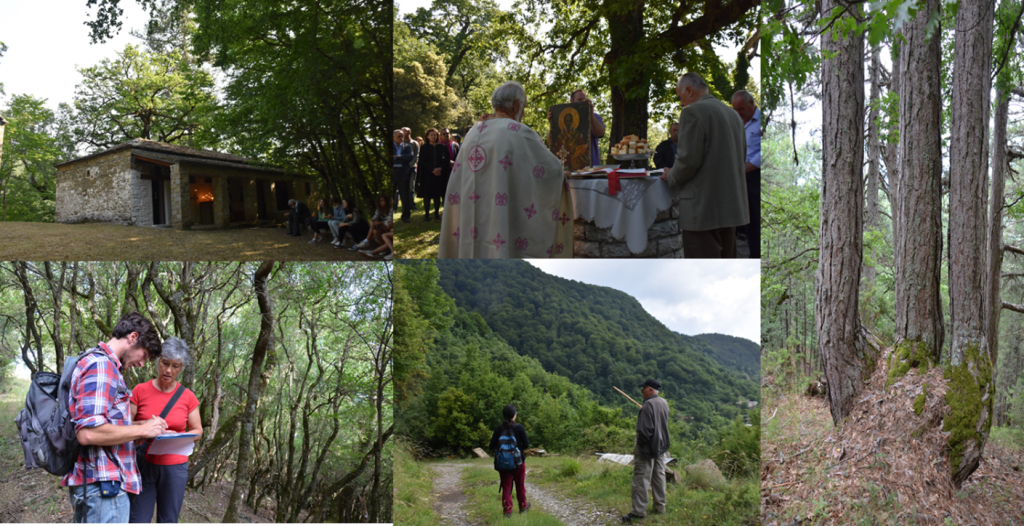
By Valentino Marini Govigli, John R. Healey, Jennifer L.G. Wong, Kalliopi Stara, Rigas Tsiakiris, and John M. Halley.
Sacred Natural Sites (SNS) are places with spiritual significance for communities, where natural and human elements are intertwined. This study focuses on sacred forests, a common form of SNS found globally across different cultures and environments. We explored how these culturally valued habitats respond to major societal changes over time and space.
Focusing on a set of five sacred forests in Epirus, NW Greece, we used a combination of tree age measurements (using growth rings – dendrochronology) and assessment of the forests’ structure around their cultural core, usually a church building, to uncover patterns in the way these forests developed through time and in space. This type of information is extremely valuable for forest conservation managers dealing with systems that combine social values and ecological dynamics.
Our findings reveal a big variation in the resilience of these sacred forests throughout the past 260 years, influenced by human cultural values and their effect on activities and disturbances. We observed shifts from historical periods of high human population and scarcity of forest resources to times of regional depopulation and land abandonment. During the latter, sacred forests often faded from memory, blending into the surrounding landscape through processes of natural forest expansion and regeneration. We also identified the vital role of traditional social elements, especially the church and associated cultural practices, in shaping the internal structure of these forests, determining what remains sacred and is preserved over time.
Based on our results, we suggest practical actions to ensure that sacred forests can adapt to big social changes. These include raising public awareness to promote cultural vitality, and active forest management such as clearing flammable shrubs from border areas and periodic light grazing to maintain the identity of individual SNS within an increasingly tree-dominated landscape.